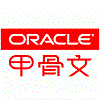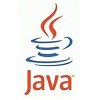🔥 HttpUtils 详解
一、详解
1.1 介绍
现如今的 Web 项目,由服务端向外发起网络请求的场景,基本上随处可见! 传统情况下,在服务端代码里访问 http 服务时,一般会使用 JDK 的 HttpURLConnection 或者 Apache 的 HttpClient,不过这种方法使用起来太过繁琐,而且 api 使用起来非常的复杂,还得操心资源回收。
1.2 什么是 HttpUtils?
- HttpUtils 是 Solon 提供的进行远程调用客户端
- HttpUtils 提供了很多远程调用的方法,能够大大提高客户端的编写效率。 HttpUtils 接口实现了 HttpURLConnection 的适配(默认),以及 OkHttp 的适配。
- 官网地址: solon-net-httputils
1.3 引入依赖
<dependency>
<groupId>org.noear</groupId>
<artifactId>solon-net-httputils</artifactId>
</dependency>
HttpUtils 不需要初始化,即可直接使用。而且,可以直接使用负载均衡的能力(需要引入 solon-cloud 的插件,提供底层支持)。像这样:
HttpUtils.http("user-service", "/user/get?id=1").get();
二、接口使用
HttpUtils 最大的特色就是对各种网络请求方式做了包装,能极大的简化开发人员的工作量,下面我们以 GET、POST、PUT、DELETE、文件上传与下载为例,分别介绍各个API的使用方式。
2.1 GET 请求
通过 HttpUtils 发送 HTTP GET 协议请求,经常使用到的方法有两个:
get() -> StringgetAs(Type type) -> T(支持泛型)
在 Solon 环境下写一个单元测试用例,首先创建一个 Api 接口,然后编写单元测试进行服务测试。
不带参的get请求
@Controller
public class TestController {
@Get
@Mapping("testGet")
public Result testGet(){
Result result = new Result();
result.setCode("200");
result.setMsg("demo...");
return result;
}
}
@Data
public class Result {
private String code;
private String msg;
}
单元测试(不带参的get请求)
@Test
public void testGet(){
//请求地址
String url = "http://localhost:8080/testGet";
//发起请求,直接返回对象
Result result = HttpUtils.http(url).getAs(Result.class);
System.out.println(result.toString());
带参的get请求(使用占位符号传参)
@Controller
public class TestController {
@Get
@Mapping("testGetByRestFul/{id}/{name}")
public Result testGetByRestFul(@Path("id") String id, @Path("name") String name){
Result result = new Result();
result.setCode("200");
result.setMsg("demo...");
return result;
}
}
单元测试(带参的get请求),顺带加了个 header 信息。
@Test
public void testGetByRestFul(){
//请求地址
String url = "http://localhost:8080/testGetByRestFul/001/张三";
//发起请求,直接返回对象(restful风格)
Result result = HttpUtils.http(url).header("App-Id","1").getAs(Result.class);
System.out.println(result.toString());
}
2.2 POST 请求
其实 POST 请求方法和 GET 请求方法上大同小异,HttpUtils 的 POST 请求也包含两个主要方法:
post() -> StringpostAs(Type type) -> T(支持泛型)
模拟表单请求,post方法测试
@Controller
public class TestController {
@Post
@Mapping("testPostByForm")
public Result testPostByForm(String userName, String userPwd){
Result result = new Result();
result.setCode("200");
result.setMsg("Demo...");
return result;
}
}
x-www-form-urlencoded post
@Test
public void testPostByForm(){
//请求地址
String url = "http://localhost:8080/testPostByForm";
//发起请求
Result result = HttpUtils.http(url)
.data("userName", "唐三藏")
.data("userPwd", "123456")
.postAs(Result.class);
System.out.println(result.toString());
}
form-data post,顺带加上文件上传
@Test
public void testPostByForm(){
//请求地址
String url = "http://localhost:8080/testPostByForm";
//发起请求
Result result = HttpUtils.http(url)
.data("userName", "唐三藏")
.data("userPwd", "123456")
.data("file", "logo.jpg", new File("/data/logo.jpg"))
.postAs(Result.class, true); //useMultipart = true
System.out.println(result.toString());
}
json-body post
@Test
public void testPostByForm(){
//请求地址
String url = "http://localhost:8080/testPostByForm";
//发起请求
Result result = HttpUtils.http(url)
.bodyOfJson("{\"userName\":\"唐三藏\",\"userPwd\":\"123456\"}")
.postAs(Result.class);
System.out.println(result.toString());
}
bean-body post
@Test
public void testPostByForm(){
//请求地址
String url = "http://localhost:8080/testPostByForm";
UserBean user = new UserBean();
user.setUserName("唐三藏");
user.setUserPwd("123456")
//发起请求
Result result = HttpUtils.http(url)
.bodyOfBean(user)
.postAs(Result.class);
System.out.println(result.toString());
}
2.3 PUT、PATCH、DELETE 请求
用法与 POST 完全相同。
2.4 高级用法
获取响应(用完要关闭)
try(HttpResponse resp = HttpUtils.http("http://localhost:8080/hello").data("name","world").exec("POST")) {
int code = resp.code();
String head = resp.header("Demo-Header");
String body = resp.bodyAsString();
}
配置序列化器。默认为 json,改为 fury;或者自己定义。
FuryBytesSerializer serializer = new FuryBytesSerializer();
Result body = HttpUtils.http("http://localhost:8080/book")
.serializer(serializer)
.bodyOfBean(book)
.postAs(Result.class);






